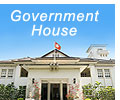
|
Developing innovation and technology to enable our young people to better unleash their potentialI have just received some good news from the United States. Three secondary students from Hong Kong have achieved the best results ever at the Intel International Science and Engineering Fair. How to nurture technology talents and help young people interested in technology to fully unleash their potential is a question for all members of our community to think about. I visited Sweden a few days ago. It was a journey through innovation and technology. KI developed an innovative system to facilitate the application and commercialisation of research results on innovative ideas which possess high development potential identified by the institute and its students and researchers. So far, this medical university has trained over 600 people in entrepreneurship and innovation research, helped developed more than 1 500 innovative projects related to medical and health care, and assisted in the establishment of over 40 innovation and technology companies and made over 30 licensing deals. The Swedish government also plays an active role in encouraging collaboration between KI and other universities in the country in research in health and environmental sciences. Apart from touring KI, I also visited Kista Science City. With the presence of over 1 000 innovation and technology enterprises, including some big names in information technology, software development and electronics such as Ericsson, IBM, Intel, Microsoft, Oracle and Siemens, the City can be described as the "Silicon Valley of northern Europe". Moreover, it is also home to some of the departments of Sweden's two leading universities, KTH Royal Institute of Technology and Stockholm University. KI and the City have set good and valuable examples of co-operation among the Government, industry, research sectors and academia. The reason behind my proposal in this year's Policy Address for the establishment of an Innovation and Technology Bureau is that I want to see more effective co-ordination and implementation of policies on innovation and technology with a view to improving people's livelihoods, promoting Hong Kong's economic development and, directly or indirectly, driving the growth of all sectors of the community. If Sweden can make it, so can Hong Kong. As the saying goes, great oaks from little acorns grow. With vision and determination, we can certainly build a successful innovation and technology sector as long as we persevere and adopt a pragmatic approach. May 17, 2014
|
|||||||||||||||||
|


